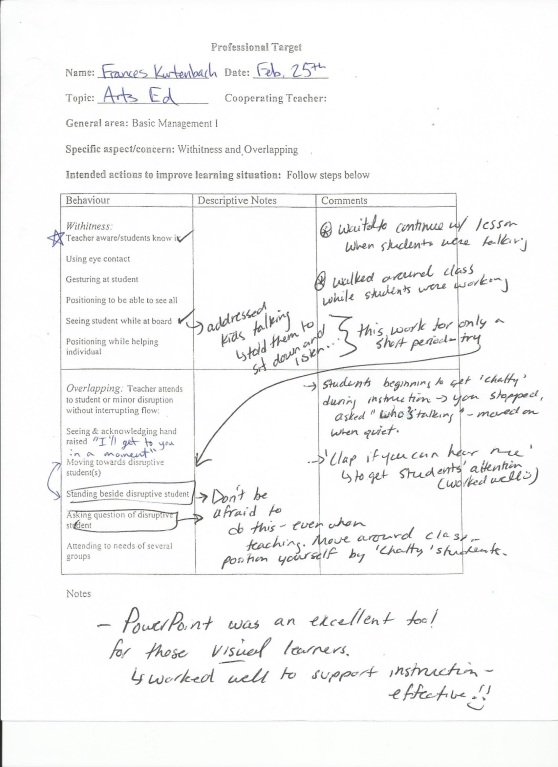Grade 7
Subject: Arts Education
Period Length: 40 minutes
Objective: To develop an understanding of the importance of design-related decisions, perspective, and how it can affect the representation of place.
Outcome: CP7.11 Investigate and use various visual art forms, images, and art-making processes to express ideas about place.
Indicators: a) Select various visual art forms (e.g., comics, photography, sculpture, film) to express ideas about the students’ place (e.g., neighbourhood, the prairie, inner city).
Adaptive Dimension:
- If students do not have pencil crayons, I will provide the class with a basket of used pencil crayons.
- If students do not have their sketchbooks available, they will be provided with sheets of plain paper to sketch on.
- Students can move around the class and draw at the back table or work with a partner if they need to move around.
Preparation/Materials: Meter stick, pencil crayons, whiteboard markers, computer paper sheets, pictures of perspective paintings, colour wheel worksheet, and rulers.
Prerequisite Learning: General understanding of what perspective is. If not, then it will be reviewed through a PowerPoint.
| Presentation | Classroom Management |
| Set: (5 minutes)– At the start of the lesson, I will start the PowerPoint, then ask the students to brainstorm different decisions artists have to make when starting a new piece of art. | – To get their attention, class will be told that we will not start the fun part of the assignment until they are ready to learn. (Seated quietly, and looking at the board) |
| Development: (30 minutes)– After discussing artists’ decisions, we will narrow the focus to the importance of place, where students will again be asked to brainstorm their answers and I will write them on the board.- After that, one point and two point perspective will be reviewed (or introduced)
– Students will be provided with a colour wheel worksheet on which they can practice blending colours together with their pencil crayons while I introduce primary, secondary, and complimentary colours. – From there, we will revisit the importance of place, and apply what we’ve learned about colour and perspective to this concept. – I will explain their practice assignment, which is to create a 1 or 2-point perspective drawing in their sketchbooks or on a piece of white paper. It will be handed in for a total of 10 marks, and will be due for the next Arts Ed period. – Students will have the remainder of the period to work on their assignment. |
– If students get rowdy, I will ask them to clap twice if they can hear me until they are all clapping again. If they do not respond, I will wait quietly until they get the hint. |
| Closure (5 minutes): – I will get their attention, and then explain that for next week, they need to bring a photo or printed image of a place that means a lot to them. It can be somewhere they have been, or lived, or somewhere that they want to travel. I will explain to them that next week, they will have to recreate the image using what they’ve learned about perspective and colour, and will be asked to write a 1 paragraph reflection on why they chose the image, and why they chose the perspective and colours that they did. |
Assessment: Students will be assessed on their engagement and participation in the activity, and their personal effort in challenging themselves throughout the practice assignment. The colour wheel assignment sheet will assess their understanding of basic colour theory, which will be handed in at the end of class. Through observation, I will see if students understand the perspective assignment.
List of Expectations:
- Students will participate in brainstorming
- The Colour Wheel assignment will be finished in class
- Students have to bring an image for next week’s class
Here is the PowerPoint that we used in class: ECS300 – ARTS ED PPT
Here is my Professional Target sheet:
Enjoy!

